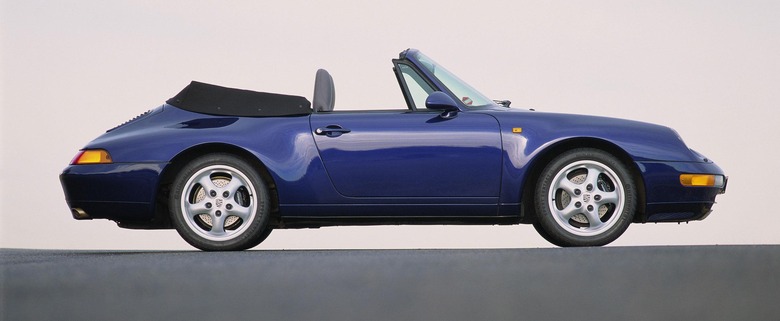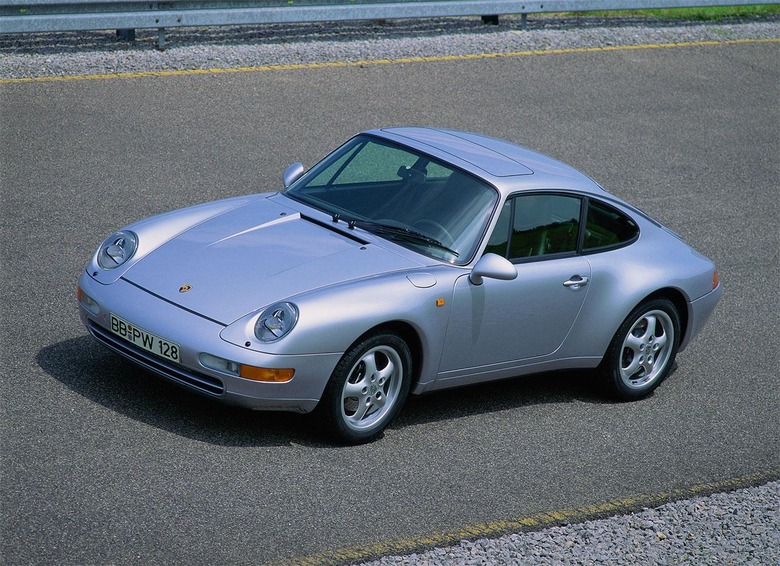1995-1998 Porsche 911: The 993 Generation
Few models in the Porsche family have been as celebrated as the 993 generation of the iconic Porsche 911 sports car. To those not intimately familiar with the internal codes assigned by the German brand to the various iterations of its most famous model, '993' refers to the crop of coupes and convertibles that made it to American shores between 1995 and 1998 (after a bit of a head-start in the European market).
Why has the 993 become the object of affection for legions of Porsche enthusiasts? The answer lies in the unpredictable confluence of heritage, design, and passion, three characteristics that have long defined Porsche as an automaker. In a world where the relentless march of progress has yielded year-over-year performance gains almost across the board when it comes to the hard numbers that sell sports cars to the masses, the 993 resonates with enthusiasts who prize the soul of an automobile to the same degree as blazing speed or asphalt-tearing grip.

That the 993 was across-the-board improvement over the 964 model it replaced was clear to anyone who had spent time behind the wheel of both vehicles. Much of the mandate given to the 993's design team was to make Porsche's flagship easier to drive in anger, with particular focus given to reducing the tendency of 911 to suddenly oversteer on throttle lift-off (as a result of its rear engine design). This was masterfully accomplished by way of a new alloy subframe that served as the bedrock for a multi-link rear suspension system that widened the car's track.
Complementing the 993's more planted stance was all-new body work, with just the doors and roof panel carried over from the 964. The car also saw more aerodynamic bumpers and a prominent – although retractable – wing perched at the back.
In fact, it wouldn't be a stretch to say that the 993 has become the defining template for the 911 in the eyes of most fans, a status that would echo across the next two decades of Porsche design and play a major role in the schism that the next-generation 996 Carrera would open up.
Perhaps even more than its styling, however, it's the 993's drivetrain that has contributed the most to its beatification amongst Porsche purists. The 911 models sold between 1993 and 1998 were the last to continue the tradition of air-cooled engine design that had for so long been a trademark for the vehicle – one which would end with the introduction of the previously-mentioned 996.

Base two-wheel drive Carrera and all-wheel drive Carrera 4 (C2 and C4, to the cognoscenti) were motivated by a 3.6-liter six-cylinder engine featuring a boxer layout and initially generating 272 horsepower, until the introduction of a variable-length intake in 1996 (known as Varioram) boosted that figure to 282 horses, along with 251 lb-ft of torque.
Transmission choices included the first six-speed manual offered in a 911, or a four-speed automatic 'Tiptronic' unit. The 993 also featured an significant upgrade to its all-wheel drive system as compared to the 964, abandoning the three-differential design in favor of a central viscous coupling that also had the virtue of lightening the car while maintaining foul-weather traction.
The 993 Carrera was good for a run to 60-mph of 5.2 seconds, with the Carrera 4 clocking in a half-second slower due to the extra weight of its AWD system. Of course, by 1995 Porsche would release the 911 Turbo, a model that would obliterate past performance records set by the coupe as well as cause more than a few exotic owners of the era to nervously check their rearview mirrors when cruising down Sunset Boulevard.

The 911 Turbo differed from its naturally-aspirated siblings in several ways. Visually, the quickest of the 993s took the wide-body look to the extreme, pushing out several inches past the base Carrera with its fender flares and adding its own unique wing, bumpers, and wheels to match its more aggressive suspension tuning. Performance-wise, its 3.6-liter six-cylinder benefited from the addition of not one, but two turbos, doubling what was available with the 964 (in the process significantly reducing turbo lag), and making all-wheel drive standard for the first time on a 911 Turbo.
The intercooled motor was capable of 408 horsepower, with the Turbo S adding offering the neighborhood of 450 horses when it appeared on the scene in 1997. Taken together, the Turbo S' improvements over the base Carrera lopped a full second and a half from the sprint to 60-mph.
The 993 Turbo was the staple of many a school kid's wall-poster fantasy, while the Carrera and Carrera 4 stood in as the more attainable members of the 911 portfolio (later to be fleshed out by the S and 4S models with their wide-body kit borrowed from the Turbo).
They would be joined throughout the course of the 90s by a number of different special edition 993-generation cars, including the track-oriented Carrera RS and RS Clubsport (3.8-liter, 300 horsepower engine, stripped interior, fixed rear spoiler), the GT2 (rear-wheel drive, track-ready version of the Turbo), and the ultra-rare Speedster, of which only two were produced.

Today, the Porsche 993 is defined almost as much by what it isn't as by what it is. The 996 that would replace it swelled in size and weight to the point where grand touring status seemed more appropriate than the lightweight, smaller-in-stature 993's true sports car personality, and the introduction of a water-cooled engine and muted styling were taken as an affront to the sensitivities of Porschephiles.
This is reflected by a quick glance at the secondary market: 993 values have skyrocketed in recent years, with Turbos trading hands for six figures, while the faster and technologically superior 996 remains perhaps the best bargain in the performance car universe.
The 993 might not be the direct link to Porsche's sporting past that the hype has made it out to be, but it's definitely to closest one can get to a modern interpretation of the spirit and design ethos that launched the 911 and helped guide it to its current status as one of the world's most sought-after sports cars.
